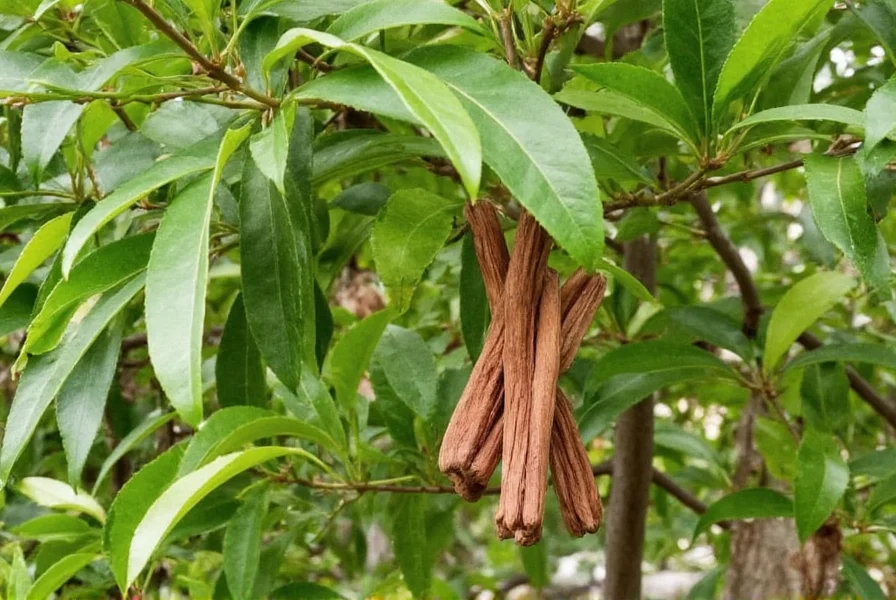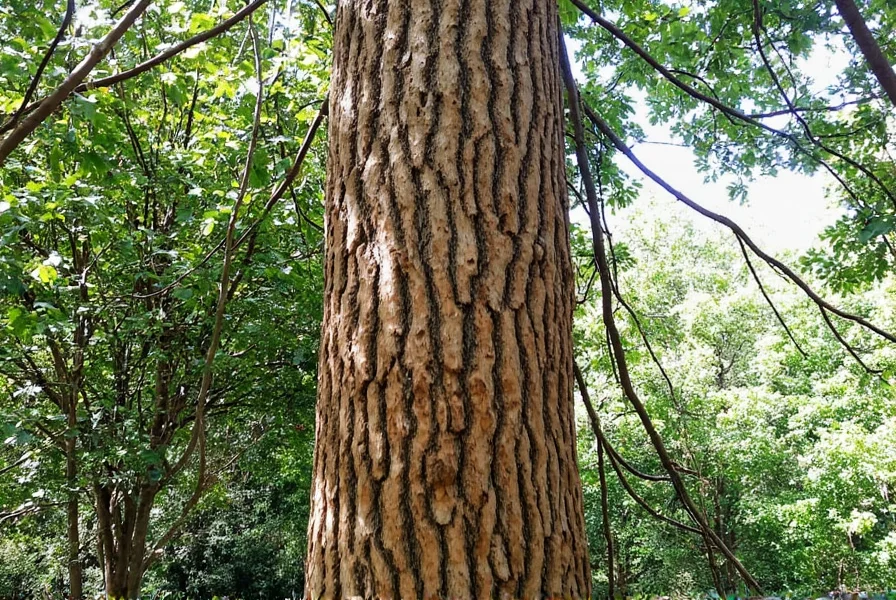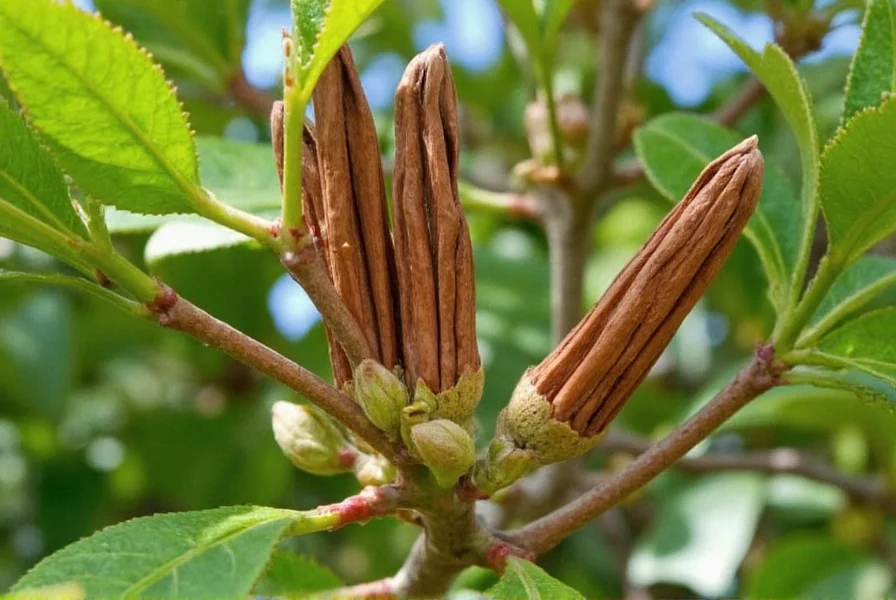Cinnamon trees represent one of the world's most beloved spice sources, with a history spanning thousands of years. Understanding these remarkable plants reveals why true cinnamon remains distinct from its more common cassia counterpart. This comprehensive guide explores the botanical characteristics, cultivation requirements, and practical uses of authentic cinnamon trees.
Botanical Classification and Species Varieties
Cinnamon belongs to the Lauraceae family, with Cinnamomum verum (Ceylon cinnamon) considered the "true" cinnamon species. Several related species exist, creating confusion in the marketplace:
| Species | Common Name | Origin | Distinguishing Characteristics |
|---|---|---|---|
| Cinnamomum verum | Ceylon cinnamon | Sri Lanka | Thin, layered bark; delicate flavor; light tan color |
| Cinnamomum cassia | Chinese cinnamon | China | Thick, hard bark; stronger flavor; dark reddish-brown |
| Cinnamomum loureiroi | Saigon cinnamon | Vietnam | Highest oil content; intense flavor |
| Cinnamomum burmannii | Indonesian cinnamon | Indonesia | Medium thickness; moderately sweet |
Native Habitat and Global Distribution
True cinnamon trees (C. verum) originated exclusively in Sri Lanka's tropical forests, where they grow naturally in the wet zone regions. Today, commercial cultivation has expanded to:
- India (Kerala and Tamil Nadu regions)
- Brazil
- Madagascar
- Caribbean islands
- Some parts of Central America
These trees cannot survive in temperate climates without greenhouse protection. Understanding cinnamon tree growing conditions is essential for successful cultivation outside their native habitat.

Physical Characteristics of Cinnamon Trees
Cinnamon trees display distinctive features that help identify them:
Trunk and Bark
The most valuable part of the tree is its inner bark, which forms the spice. Young trees develop smooth, pale brown bark that becomes rougher with age. When cultivated for spice production, farmers grow trees for two years before cutting them back to encourage new shoots with optimal bark quality.
Leaves and Aroma
Cinnamon trees produce aromatic evergreen leaves that are:
- 7-18 cm long with an oval shape
- Glossy dark green on top, lighter underneath
- Strongly fragrant when crushed
- Arranged in opposite pairs along branches
Flowers and Fruit
Mature trees (typically 3+ years) produce small, white to greenish flowers in clusters. These develop into small, dark purple berries containing a single seed. While the fruit isn't commercially valuable, it helps with cinnamon tree propagation methods.
Growing Conditions for Healthy Cinnamon Trees
Successful cultivation requires specific environmental conditions that mimic the tree's native habitat. Understanding cinnamon tree soil requirements and climate needs determines whether you can grow these trees in your region.
Climate Requirements
Cinnamon trees thrive in tropical conditions with:
- Temperatures between 77-86°F (25-30°C)
- High humidity (70% or higher)
- Protection from strong winds
- Frost-free environment (trees die below 50°F/10°C)
- Annual rainfall of 70-100 inches
Soil and Planting Requirements
For optimal growth, cinnamon trees need:
- Well-draining sandy loam soil
- pH between 5.5-6.5 (slightly acidic)
- Ample organic matter
- Partial shade when young, increasing to full sun as they mature
When establishing new trees, proper cinnamon tree care guide practices include regular watering during dry periods and protection from direct sun until established.
Harvesting Cinnamon Bark: The Traditional Process
The distinctive spice comes from a meticulous harvesting process perfected over centuries. Understanding the cinnamon tree harvesting process reveals why true cinnamon commands premium prices.
- Cutting back: Two-year-old trees are cut near ground level to stimulate new shoots
- Peeling: After 2-3 months, workers remove outer bark from new shoots
- Scraping: They carefully scrape the inner bark with special knives
- Drying: Strips curl naturally as they dry, forming characteristic "quills"
- Processing: Quills are cut to standard lengths and graded by quality
This labor-intensive process explains the price difference between Ceylon cinnamon and cassia varieties, which have a simpler harvesting method.

Common Challenges in Cinnamon Tree Cultivation
Growers face several challenges when cultivating cinnamon trees, particularly outside their native habitat. Awareness of these issues helps implement proper cinnamon tree care guide practices.
Pests and Diseases
The most problematic issues include:
- Dieback disease: Fungal infection causing branch death (managed with pruning)
- Leaf spot: Various fungi creating brown spots on leaves
- Scale insects: Sap-sucking pests requiring organic insecticides
- Root rot: Caused by poor drainage or overwatering
Environmental Stressors
Cinnamon trees show sensitivity to:
- Temperature fluctuations below 50°F (10°C)
- Dry air conditions
- Waterlogged soil
- Direct intense sunlight for young plants
Practical Uses Beyond the Kitchen
While most people associate cinnamon trees with culinary spice, they offer additional valuable applications:
- Essential oil production: Cinnamon bark and leaf oils have antimicrobial properties
- Traditional medicine: Used in Ayurvedic practices for digestive issues
- Woodworking: The fine-grained wood works well for small crafts
- Aromatherapy: Bark and leaf extracts provide warming, spicy scents
- Natural pest control: Oil repels certain insects when properly diluted
Propagation and Long-Term Care
Establishing new cinnamon trees requires patience and proper technique. Understanding cinnamon tree propagation methods ensures successful growth.
Most commercial growers use stem cuttings rather than seeds, as this preserves desirable characteristics. The process involves:
- Selecting healthy 6-8 inch cuttings from mature trees
- Removing lower leaves and treating with rooting hormone
- Planting in moist, well-draining propagation mix
- Maintaining high humidity until roots develop (typically 6-8 weeks)
- Gradual acclimation to normal growing conditions
With proper care, cinnamon trees reach full production capacity at 3-4 years and can remain productive for 30-40 years. Their cinnamon tree lifespan makes them a valuable long-term investment for suitable climates.
Conclusion: Preserving True Cinnamon Heritage
Cinnamon trees represent a remarkable botanical resource with deep cultural and economic significance. As consumers increasingly seek authentic Ceylon cinnamon over cassia varieties, understanding these trees' specific needs becomes more valuable. Whether you're a home gardener in a tropical climate or simply curious about this ancient spice source, appreciating the complexity behind each cinnamon quill enhances our connection to this remarkable plant.
How long does it take for a cinnamon tree to produce harvestable bark?
Cinnamon trees require approximately two years of growth before their bark becomes suitable for harvesting. Commercial growers typically cut trees back to ground level after two years, then harvest the new shoots that emerge during the following growing season when they reach pencil thickness.
Can you grow cinnamon trees indoors or in non-tropical climates?
Yes, but with significant limitations. Cinnamon trees can grow indoors in temperate climates if provided with high humidity (70%+), temperatures between 77-86°F (25-30°C), and bright indirect light. They typically remain small (3-6 feet) when container-grown and rarely produce harvestable bark, though they will develop aromatic leaves.
What's the difference between Ceylon cinnamon and cassia cinnamon?
Ceylon cinnamon (Cinnamomum verum) has multiple thin layers of delicate bark that form tight, soft quills with a light tan color and complex, citrusy flavor. Cassia cinnamon (primarily Cinnamomum cassia) has a single thick, hard layer of dark reddish-brown bark with a stronger, more pungent flavor. Ceylon contains significantly less coumarin, making it safer for regular consumption.
How much cinnamon can one tree produce annually?
A mature cinnamon tree (4+ years) typically yields 4-10 pounds of dried cinnamon bark annually through sustainable harvesting practices. Commercial plantations achieve higher yields through specialized cultivation techniques, with well-managed trees producing up to 20 pounds per year under optimal conditions.
Do cinnamon trees require special pruning techniques?
Yes, cinnamon trees benefit from specific pruning practices. After the initial two-year growth period, trees are cut back to encourage new shoots ideal for bark harvesting. Regular pruning removes dead wood and maintains an open structure to improve air circulation. Unlike fruit trees, cinnamon trees don't require complex shaping—focusing on healthy shoot production is the primary goal.
Frequently Asked Questions
How long does it take for a cinnamon tree to produce harvestable bark?
Cinnamon trees require approximately two years of growth before their bark becomes suitable for harvesting. Commercial growers typically cut trees back to ground level after two years, then harvest the new shoots that emerge during the following growing season when they reach pencil thickness.
Can you grow cinnamon trees indoors or in non-tropical climates?
Yes, but with significant limitations. Cinnamon trees can grow indoors in temperate climates if provided with high humidity (70%+), temperatures between 77-86°F (25-30°C), and bright indirect light. They typically remain small (3-6 feet) when container-grown and rarely produce harvestable bark, though they will develop aromatic leaves.
What's the difference between Ceylon cinnamon and cassia cinnamon?
Ceylon cinnamon (Cinnamomum verum) has multiple thin layers of delicate bark that form tight, soft quills with a light tan color and complex, citrusy flavor. Cassia cinnamon (primarily Cinnamomum cassia) has a single thick, hard layer of dark reddish-brown bark with a stronger, more pungent flavor. Ceylon contains significantly less coumarin, making it safer for regular consumption.
How much cinnamon can one tree produce annually?
A mature cinnamon tree (4+ years) typically yields 4-10 pounds of dried cinnamon bark annually through sustainable harvesting practices. Commercial plantations achieve higher yields through specialized cultivation techniques, with well-managed trees producing up to 20 pounds per year under optimal conditions.
Do cinnamon trees require special pruning techniques?
Yes, cinnamon trees benefit from specific pruning practices. After the initial two-year growth period, trees are cut back to encourage new shoots ideal for bark harvesting. Regular pruning removes dead wood and maintains an open structure to improve air circulation. Unlike fruit trees, cinnamon trees don't require complex shaping—focusing on healthy shoot production is the primary goal.











 浙公网安备
33010002000092号
浙公网安备
33010002000092号 浙B2-20120091-4
浙B2-20120091-4